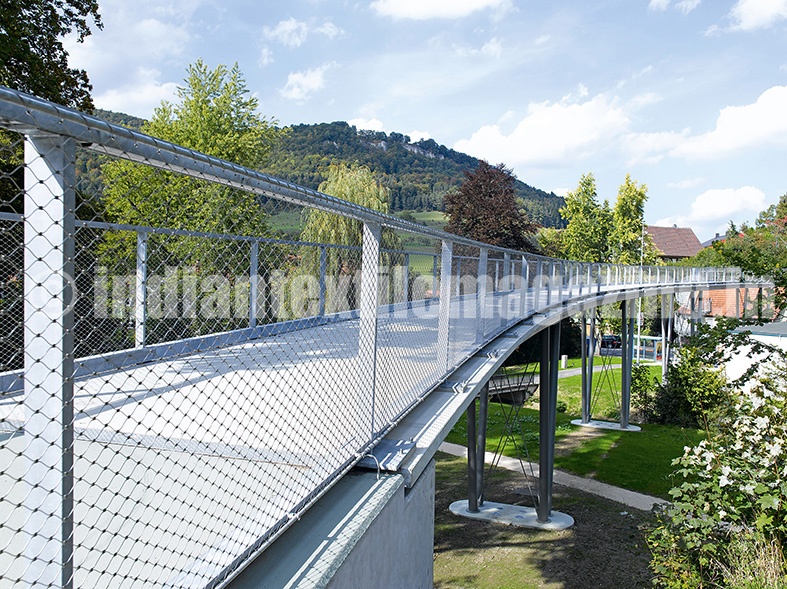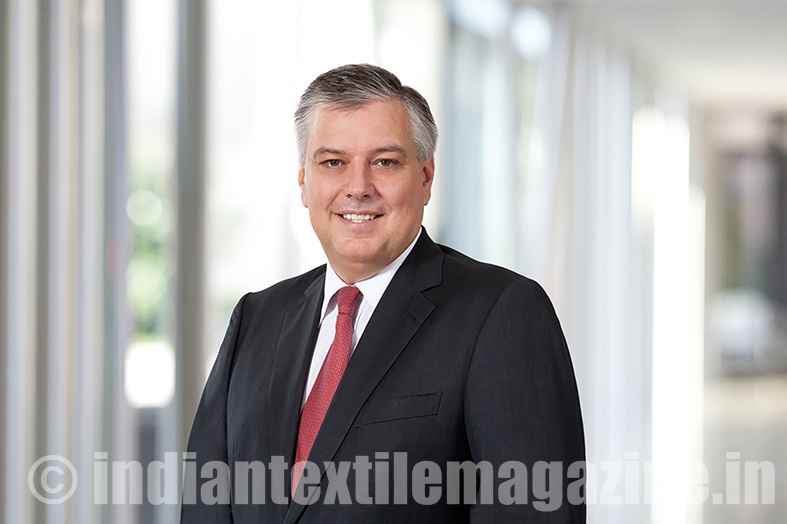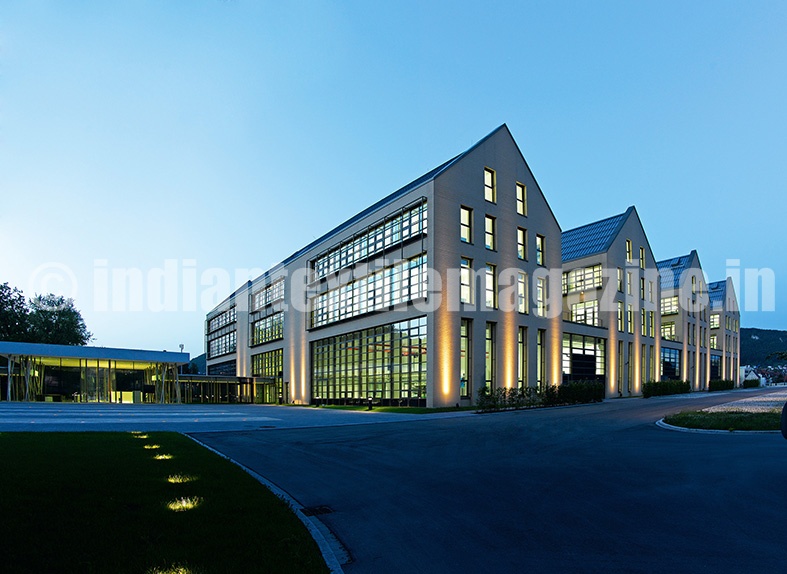One of the largest textile machinery equipment suppliers in the world, Groz-Beckert has demonstrated with its “Litespeed” needles for circular knitting machines that product innovations are not driven solely by financial considerations. Its latest innovation weighing just 0.6 gram is capable of lowering the end user’s CO2 emissions significantly and has received a number of environmental and innovation awards. At ITMA in Milan, Groz-Beckert presented the next generation of this needle: the Litespeed Plus.
Eric Schöller, a member of the Management Board, explains why this family-owned company and active member of VDMA with 7,700 employees worldwide devotes equal attention to efficiency and sustainability in all its new developments and research into such future technologies as textile-reinforced concrete.
Excerpts:
“Sustainability meets profit” was like a banner over the world’s largest textile machinery trade fair. Groz-Beckert supported this concept with the presentation of several product innovations representing the issues of conserving resources and raising productivity. The guiding principle of sustainability is based on ecological, economic and social accountability as well as profitable growth. For this reason, we are also committed participants in the VDMA “Blue Competence” sustainability initiative, which has become a powerful network of 400 partners in a concerted effort to make sustainable products with sustainable production.

A daughter company follows its own destiny: solidian explores the possibilities of textile-reinforced concrete
Can you give a few examples?
For example, at ITMA we presented new modules in our expanded warp knitting range. When they are used together with a Groz-Beckert knitting machine needle, perfectly co-ordinated tools are guaranteed. This in turn means that processes run smoothly in every sense, and are not interrupted by errors, thus ensuring maximum productivity while conserving resources.
Another example is the service concept Sewing, which encompasses the sectors Supply, Solutions, Service, Superiority and Sustainability. As a partner, Groz-Beckert assists its customers throughout the entire sewing process. In this way, we create the best possible conditions, not only for making the right product choice, but also for perfect needle handling, and thus also profitable production. Another example is the EcoStar needle used to make nonwovens. When used, it reduces energy consumption by as much as 7 per cent, and it has a considerably longer service life.
Resource protection begins at the product development stage. What can users expect from the new generation of “Litespeed Plus” needles?
In order to be truly effective, sustainability must be a way of life at every workstation. This is why in the last few years Groz-Beckert has continuously lowered its emissions and energy consumption while still raising productivity. We are committed to sustainability ourselves, and we want to support this approach among our customers with our products.

Sustainability as sales argument. What orders of magnitude are we talking about?We have been extremely successful in this with the new generation “Litespeed” needles for high-performance circular knitting machines: The further improved shaft geometry reduces friction and wear substantially. As a result, we achieve much higher productivity, enormous energy savings and a reduction in our CO2 emissions.
When “Litespeed Plus” needles are used, it has proven possible to lower the machine temperature and energy consumption by up to 20 per cent. With a single needle set consisting of 3,000 needles, knitting mills in China have recorded a CO2 reduction of 1.4 tons per year, in India this figure was found to be over 2.4 tons. For the sake of comparison: In order to create an equivalent quantity of nitrogen emissions, you would have to fly 3,800 or 6,400 kilometres respectively. To give you a better idea of the impact this one innovation could have: If all the circular knitting machines in the world were equipped with these significantly lighter Litespeed needles, carbon dioxide emissions could be reduced by 475,000 tons year after year.
At the beginning of the year, Groz-Beckert acquired the worldwide carding operations of the Bekaert Group. Was the new carding sector were represented at ITMA?
Visitors to the ITMA found a completely new trade fair concept at our stand; of course our new Carding product sector will also be represented there. With carding, we have made an important addition to our product and service portfolio relating to all aspects of our Knitting, Weaving, Felting, Tufting and Sewing sectors. This acquisition provided Groz-Beckert with access to the spinning industry for the first time. It also enabled us to offer a full range of products and services in the field of carding from a single supplier: from consulting and recommendation of products from the entire portfolio to assembly and roller repair and even including a commissioning service.
Groz-Beckert has supplied the nonwovens industry with felting and structuring needles, and with jet strips for hydroentanglement systems since 1980. We have several years of experience in servicing metallic card clothing. So the new products and services supplement our existing portfolio perfectly, and will serve as the source of many synergies and development opportunities in the future.
Does Groz-Beckert also work with textile research institutes?
Co-operation with textile research institutes offers the chance to jointly develop discoveries that have been made in basic research. We have good, long-standing relationship with a number of textile research institutes, including ITV in Denkendorf, ITM in Dresden and ITA in Aachen. The nature of such co-operation is also highly diversified. For example, ITA in Aachen was our research partner in developing a textile-reinforced concrete bridge. The bridge is still the longest of its kind in the world.
3D textile printing is beginning to make headlines. Are your developers monitoring this trend?
Yes, even though 3D textile printing is still rather in its infancy and is being driven mainly by small fashion labels and technology freaks at the moment, I believe it has enormous potential. Particularly with regard to technical textiles, such as inelastic structures, 3D printing technology will establish itself in technological fringe areas of the textiles industry – and I expect it to happen within this decade.
One last question about your innovation strategy. Or to put it another way, how did a manufacturer of industrial machine needles hit on the idea of building textile bridges?
As we assess potential growth areas in the textile industry that are relevant and represent a fit for us, besides the interesting subject of filtration we are also investigating composite fibres for lightweight construction. This led to our undertaking to build the Albstadt textile reinforced concrete bridge using glass fibre composite. With a span of 100 metres, the bridge is the largest of its kind in the world, and its lightweight construction has attracted the attention. On this basis, we founded a subsidiary company in 2013. solidian GmbH is now responsible for all activities relating to textile construction. It manufactures textile reinforcements of glass or carbon fibres. These are used in building of textile-reinforced concrete bridges, façade panels and ready-mixed concrete parts. These products already play an important part in maintenance.
Groz-Beckert is the world’s leading provider of industrial machine needles, precision parts and precision tools, as well as systems and services for manufacturing and joining textile surfaces. The company’s products and services support the Knitting, Warp knitting, Weaving, Felting, Tufting, Carding and Sewing sectors and the production of nonwovens. With 70,000 product types, the company services the world market. Founded in 1852, the company now employs a workforce of 7,700 and achieved sales of 571 million euro. It is active in 150 countries also through a network of agencies and manufacturing and sales subsidiaries. Wherever ideas are born and trends are set in the world of textiles, this major corporation supports the manufacturers of textiles and machinery.
“I believe 3D printing technology will establish itself in technological fringe areas of the textiles industry – and I expect it to happen within this decade.”
– Mr. Eric Schöller, Managing Director, Groz-Beckert KG

